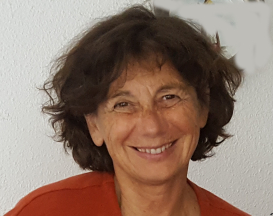Prof. Marie Beurton-Aimar
LaBRI, Université Bordeaux

Siamese networks for old document reassembly
Analysis of large data sets of old documents most often requires to consider an operation of reassembly them firstly. The material: paper, pottery, tissues ..... is often damaged: color modifications, tears, re-using for another usage (wrapping or any another one), assault of time.... Before to be able to read and to study these documents, assembly process has to be achieved. We have studied different cases of old Egyptian documents: ostraca and papyrus, to propose new algorithms to archaeologists to classify fragments of documents in order to help them to reconstruct the whole one. This puzzle resolution problem can be addressed by Deep Learning methods (Paumard et al. 2018). Siamese networks are convolutional networks used in Deep Learning for example to recognize signatures(Bromley et al 1994 for preliminary work) or faces in images(Koch et al. 2015). They are able to extract features by applying convolutional operations and to decide if they belong to the same document or not. Through the two examples of ostraca and papyrus fragments we will show how this model can be helpful to archaeologists, which limits they have and how to propose post-treatments based on graph modelling to propose possible arrangements.
Marie Beurton-Aimar received her PhD and Habilitation degrees in Computer Science at the University of Bordeaux in 2000 and 2014 respectively. She is a full assistant professor and researcher in the Laboratoire Bordelais de Recherche in Informatics (LaBRI) and belongs to the Image Analysis team. After a first period of research about simulation in bioinformatics, mainly by using multi-agents systems, and about image processing methods using also multi-agents systems, she has turned to machine learning topics and studies how deep learning models can offer new solutions to some image processing problems. She is the group leader of the MorphoBoid group which works on Deep Learning models for different applications: 3D medical image analysis, old documents assembly, analysis of video to characterise human behaviours, automation of landmarking in biological images. She belongs to several national research groups (GDR) working on image processing and artificial intelligence. She collaborates deeply with EPHE (Ecole Pratique des Hautes Etudes, Paris), with AUSONIUS (Archaeological Laboratory, Bordeaux) and with the institute of papyrology (Sorbonne, Paris) for several projects in archeology, with the L3i (research lab, La Rochelle) and the Xlim (Research lab, Poitiers) for MRI Brain analysis project, and with several companies for video and images analysis in medical context. The last two years, she has been a mentor at the Summer School of EBI (Cambridge, UK) and invited at the Neo-Paleography congress (Basel, Switzerland).